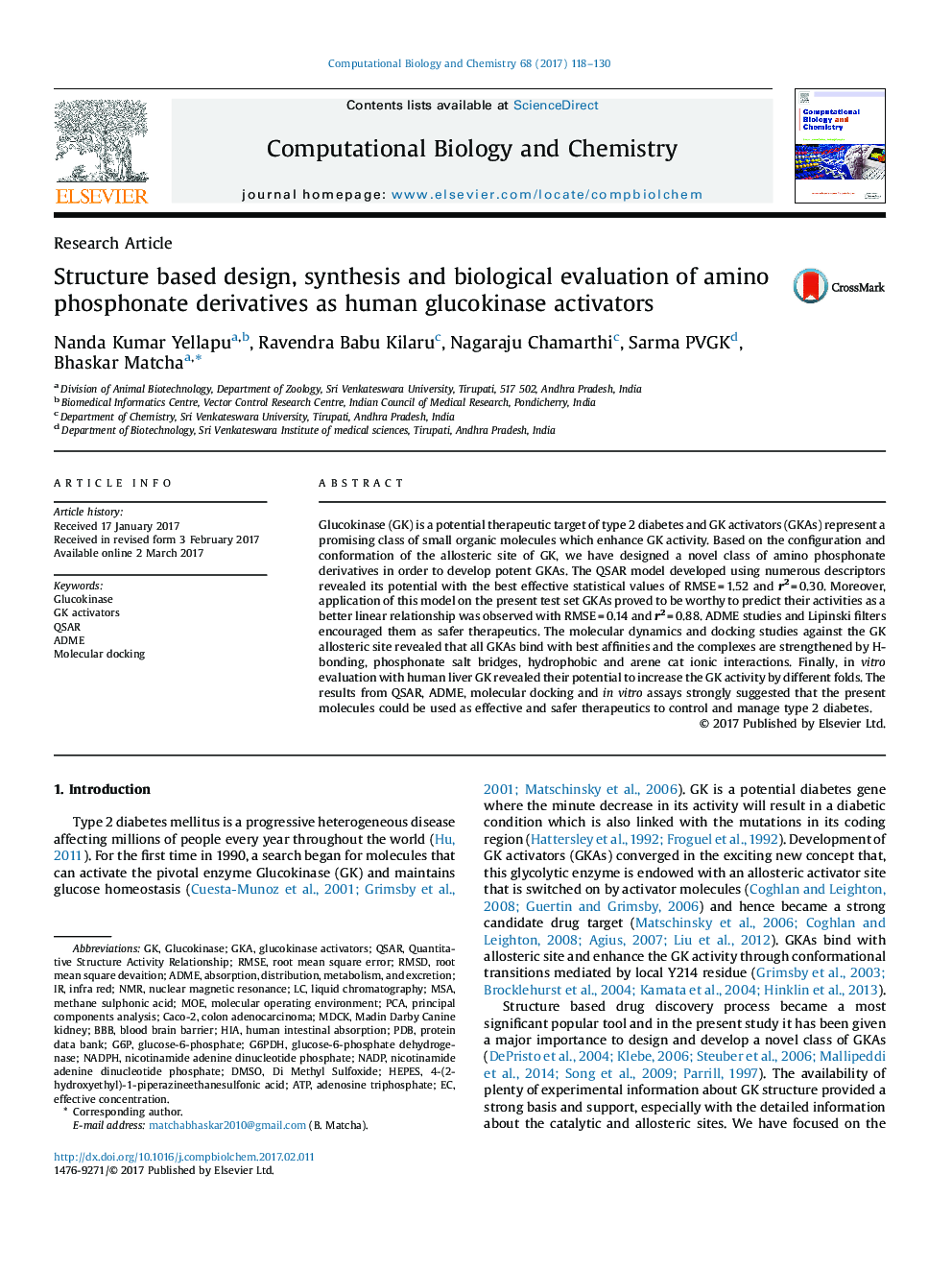| کد مقاله | کد نشریه | سال انتشار | مقاله انگلیسی | نسخه تمام متن |
|---|---|---|---|---|
| 6451329 | 1416279 | 2017 | 13 صفحه PDF | دانلود رایگان |
- Novel biosenstive α-aminophosphonates were designed and synthesized as GK activators.
- QSAR descriptors and ADME properties proved them as safer drugs.
- Molecular docking studies of GKAs revealed their best binding affinities and orientations.
- The in vitro evaluation of GKAs revealed their potential GK activation.
Glucokinase (GK) is a potential therapeutic target of type 2 diabetes and GK activators (GKAs) represent a promising class of small organic molecules which enhance GK activity. Based on the configuration and conformation of the allosteric site of GK, we have designed a novel class of amino phosphonate derivatives in order to develop potent GKAs. The QSAR model developed using numerous descriptors revealed its potential with the best effective statistical values of RMSEÂ =Â 1.52 and r2Â =Â 0.30. Moreover, application of this model on the present test set GKAs proved to be worthy to predict their activities as a better linear relationship was observed with RMSEÂ =Â 0.14 and r2Â =Â 0.88. ADME studies and Lipinski filters encouraged them as safer therapeutics. The molecular dynamics and docking studies against the GK allosteric site revealed that all GKAs bind with best affinities and the complexes are strengthened by H-bonding, phosphonate salt bridges, hydrophobic and arene cat ionic interactions. Finally, in vitro evaluation with human liver GK revealed their potential to increase the GK activity by different folds. The results from QSAR, ADME, molecular docking and in vitro assays strongly suggested that the present molecules could be used as effective and safer therapeutics to control and manage type 2 diabetes.
224
Journal: Computational Biology and Chemistry - Volume 68, June 2017, Pages 118-130
